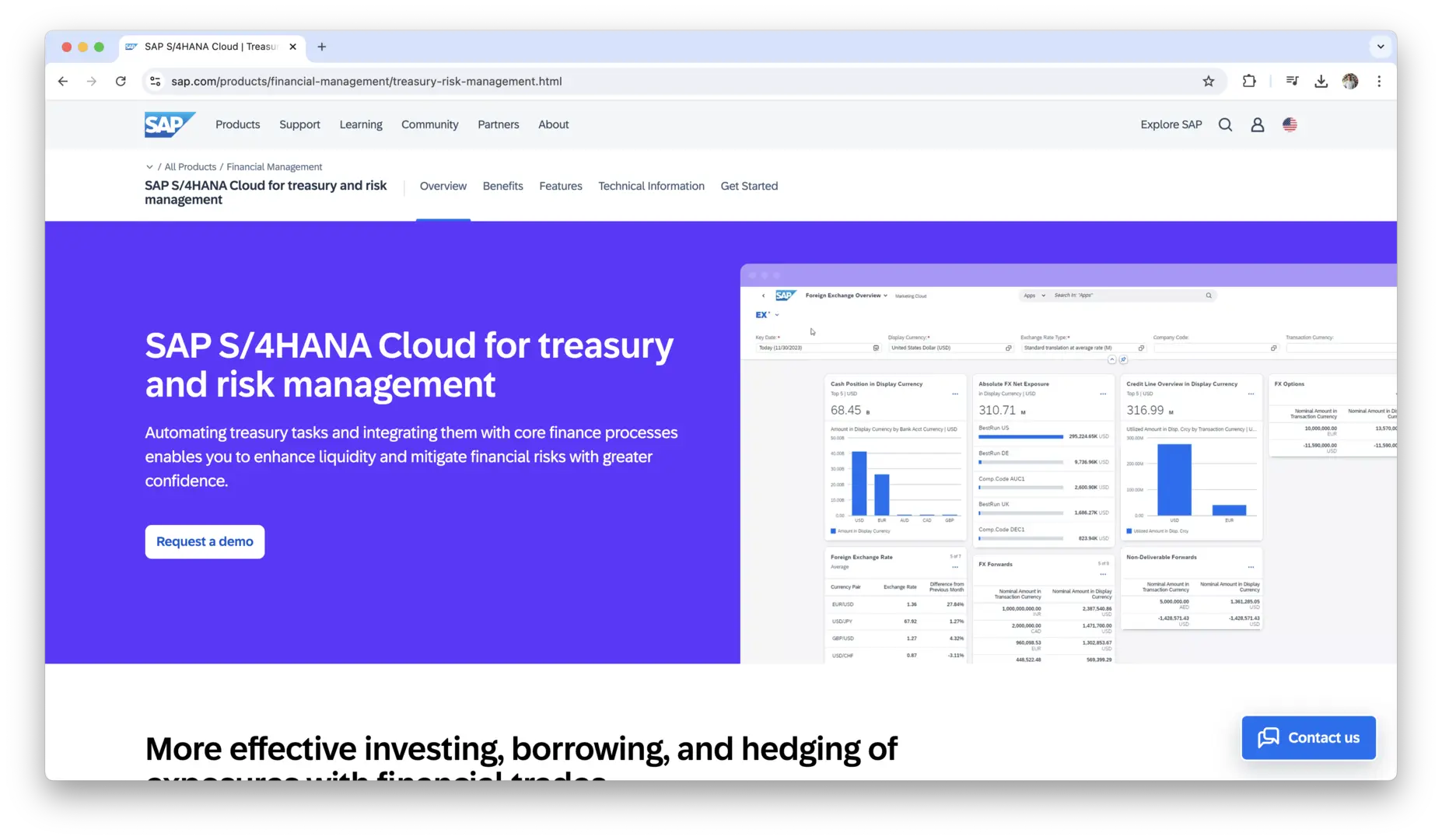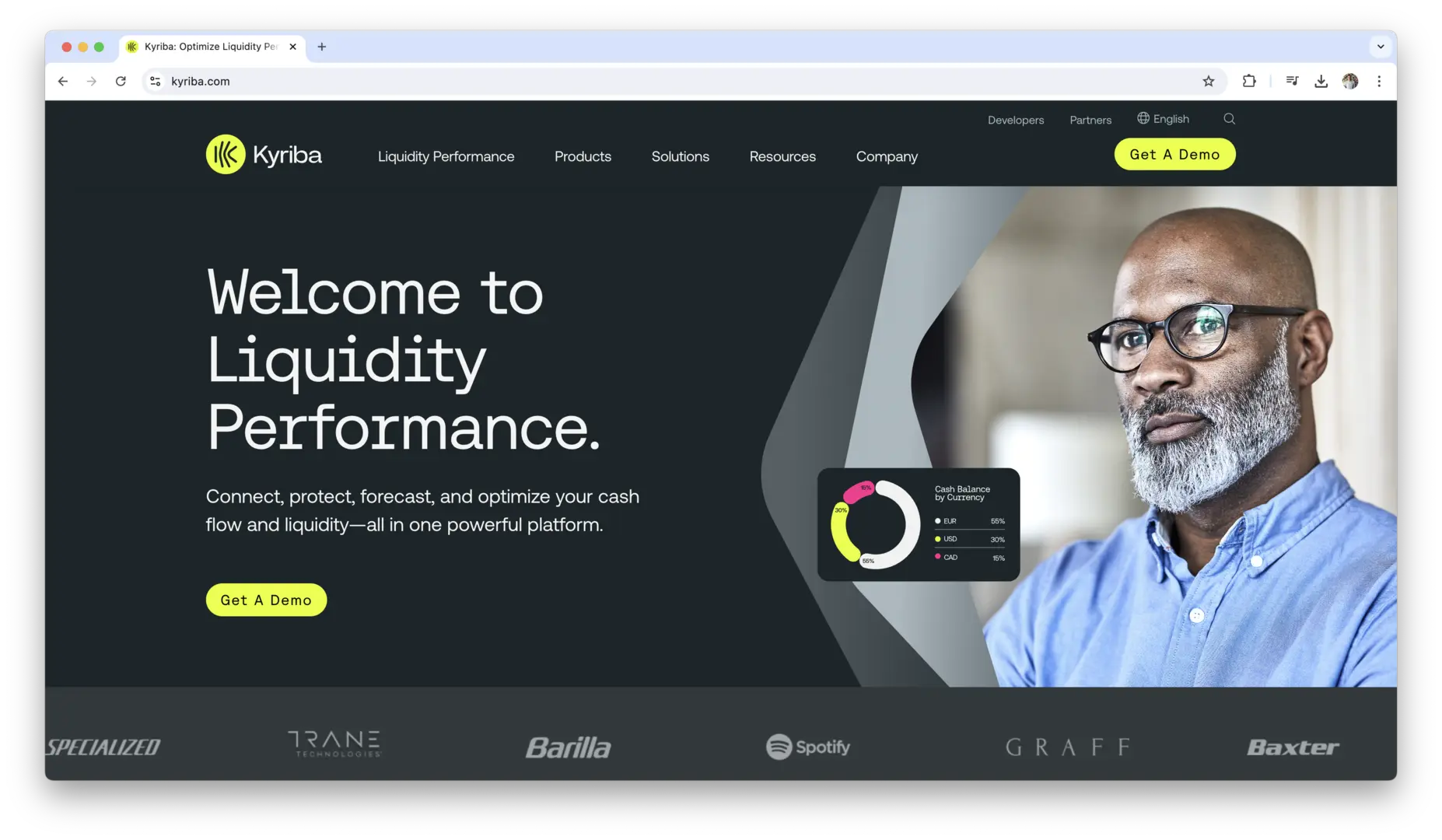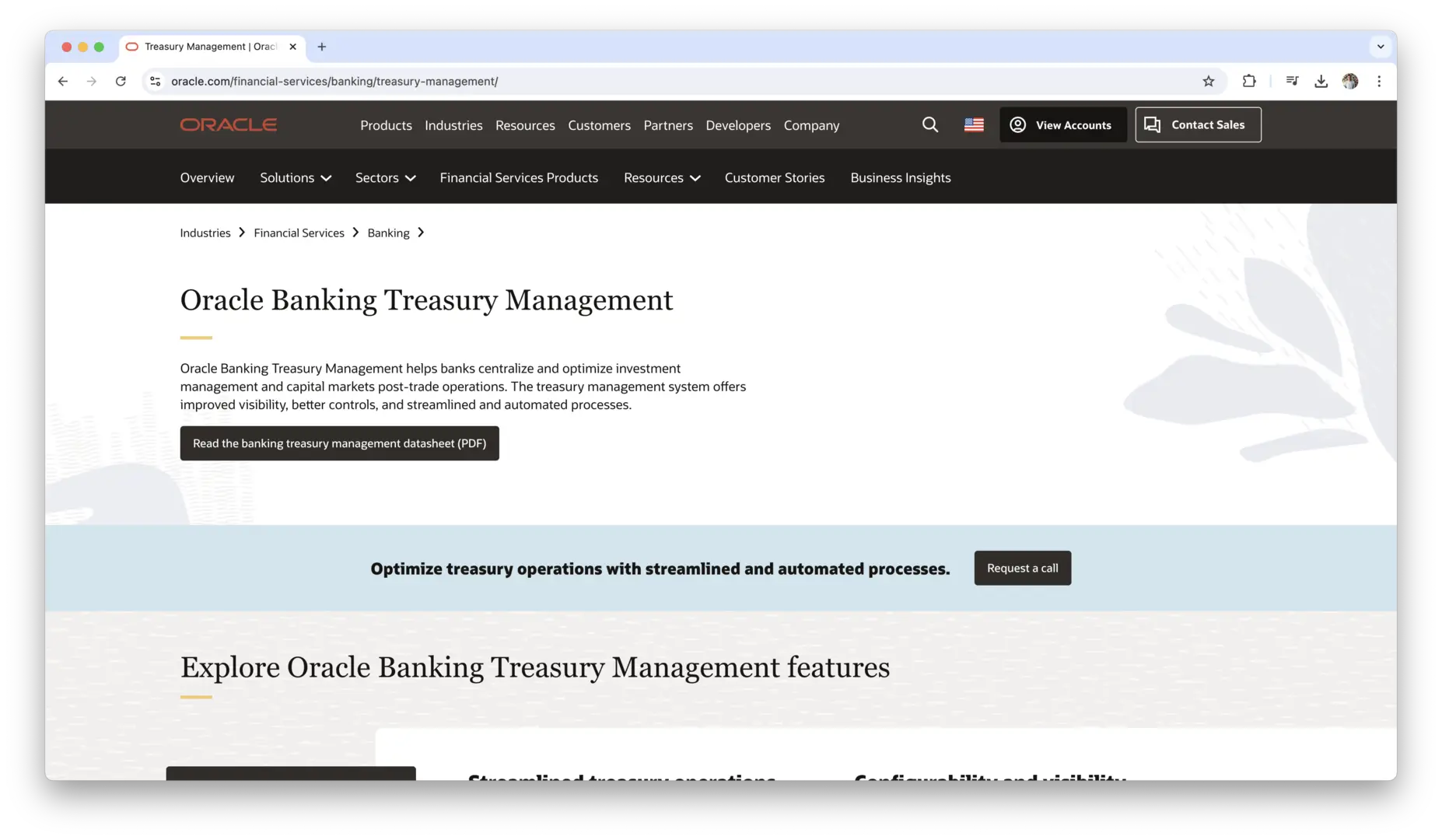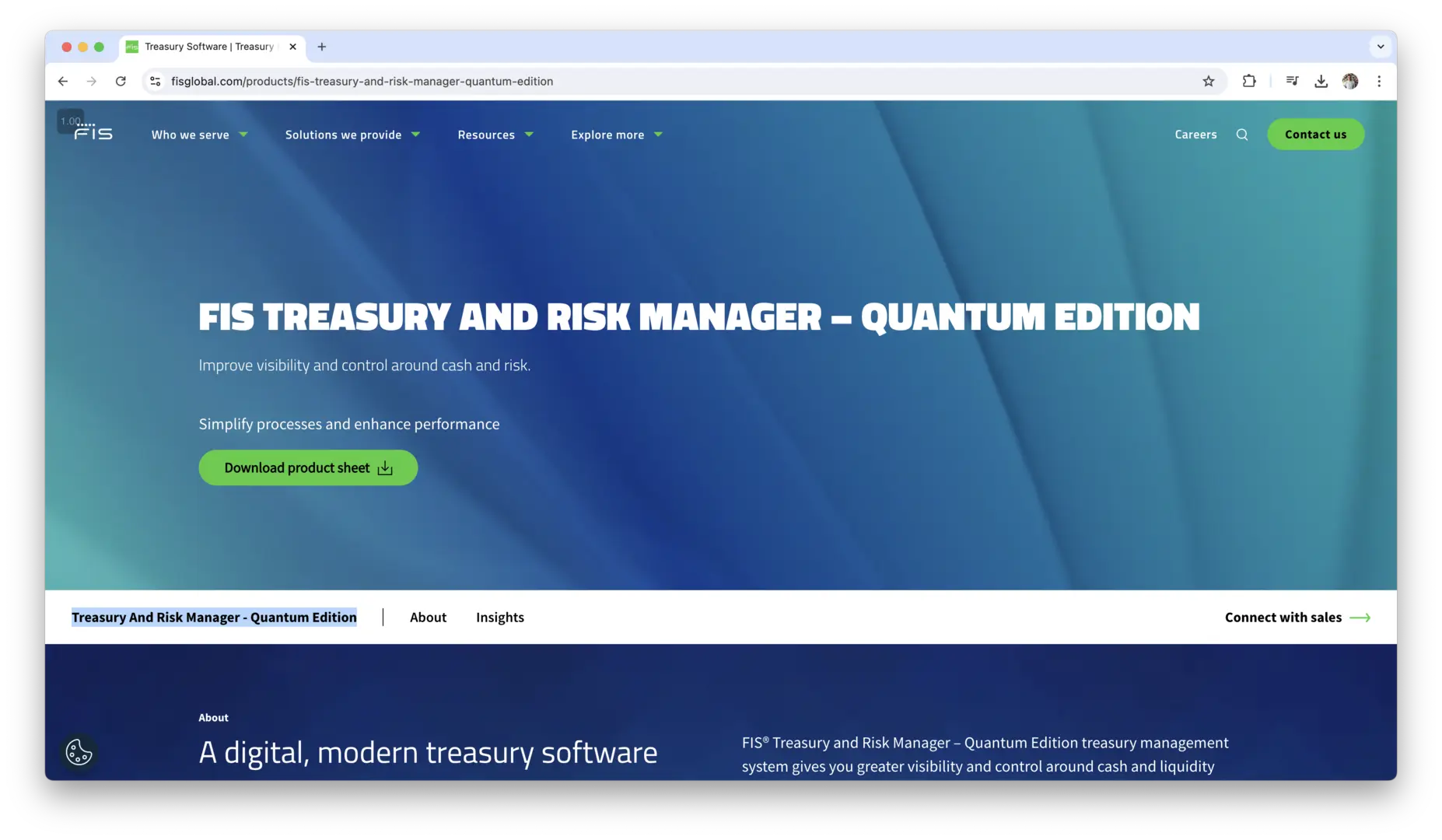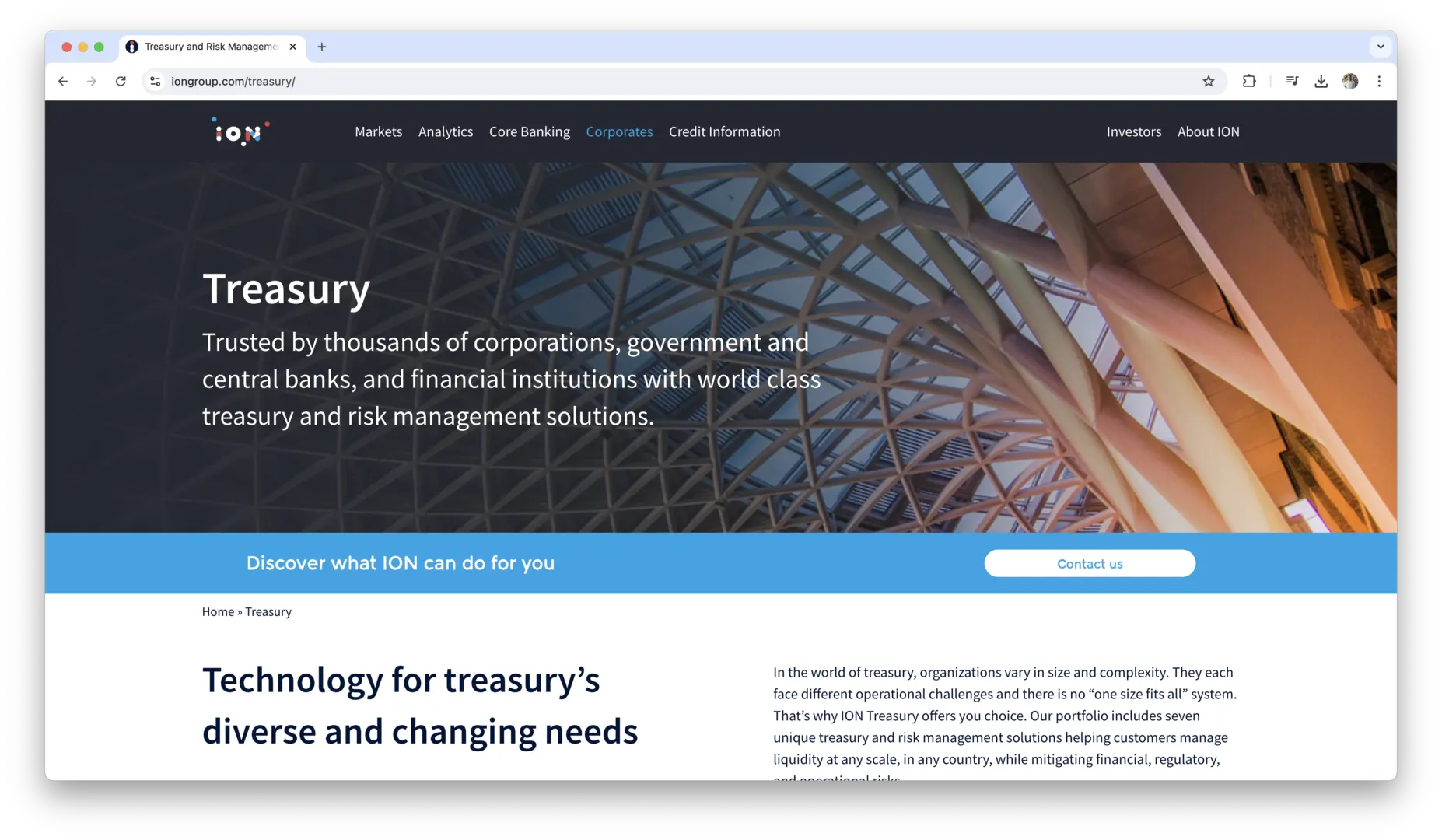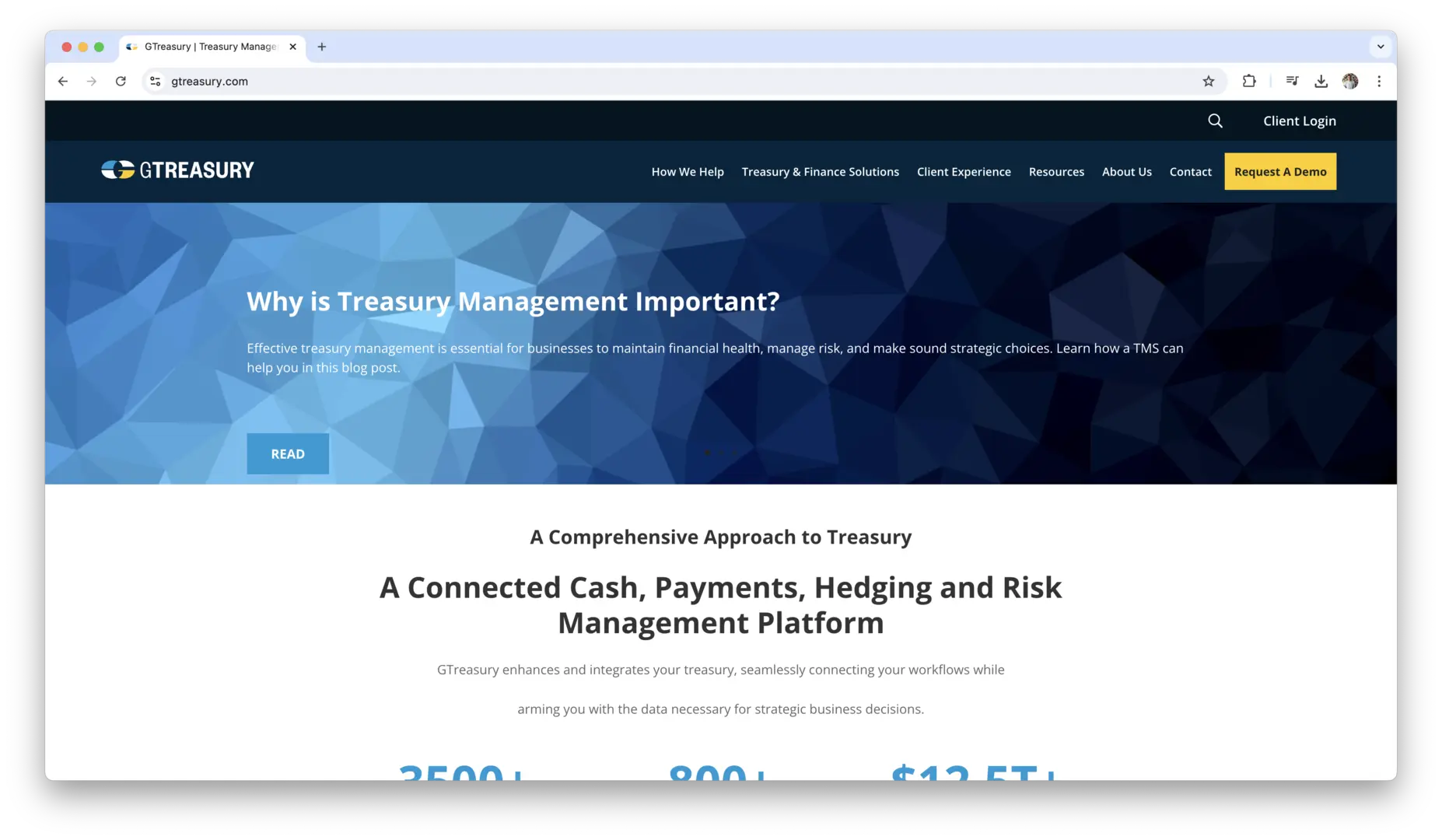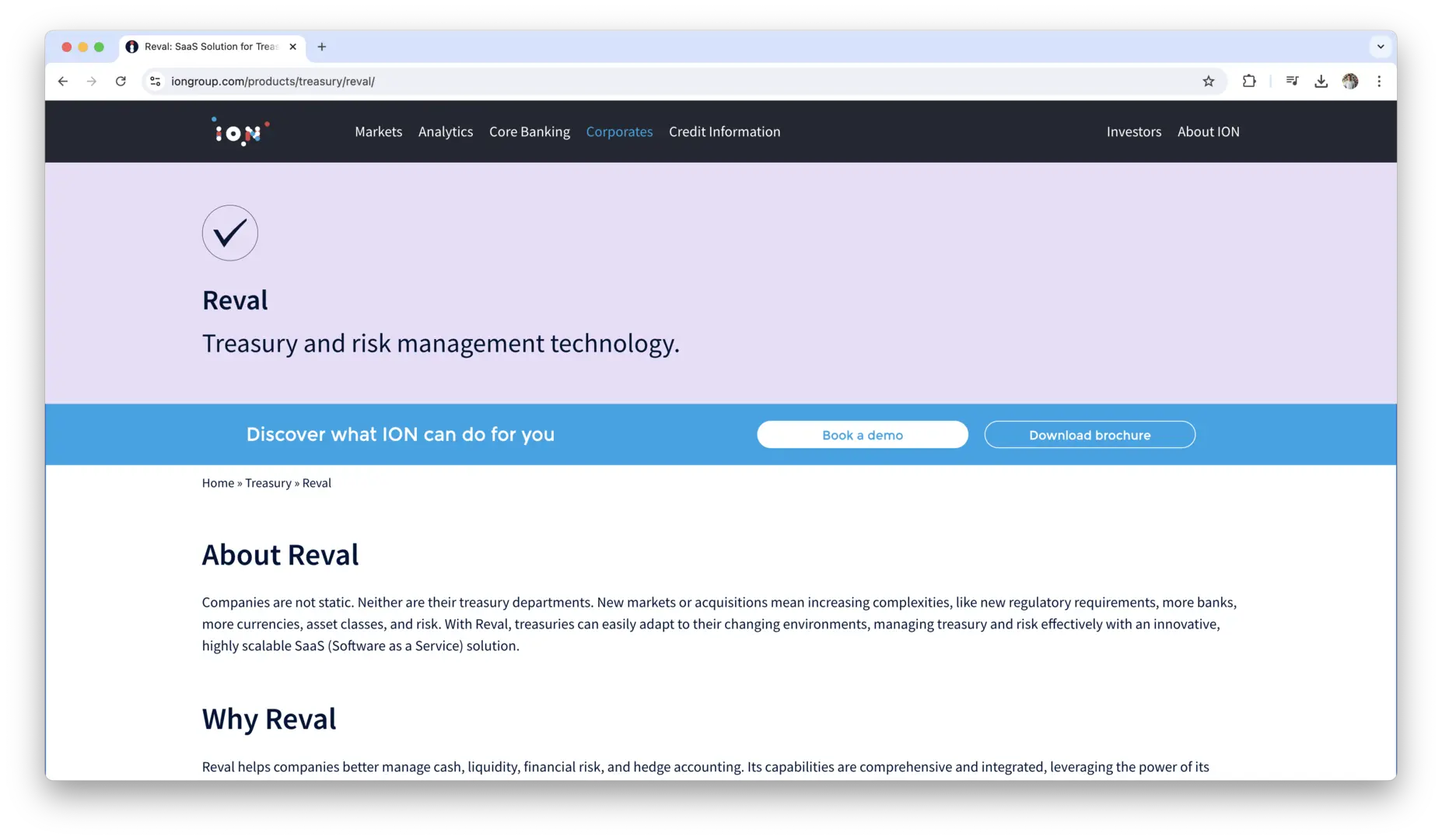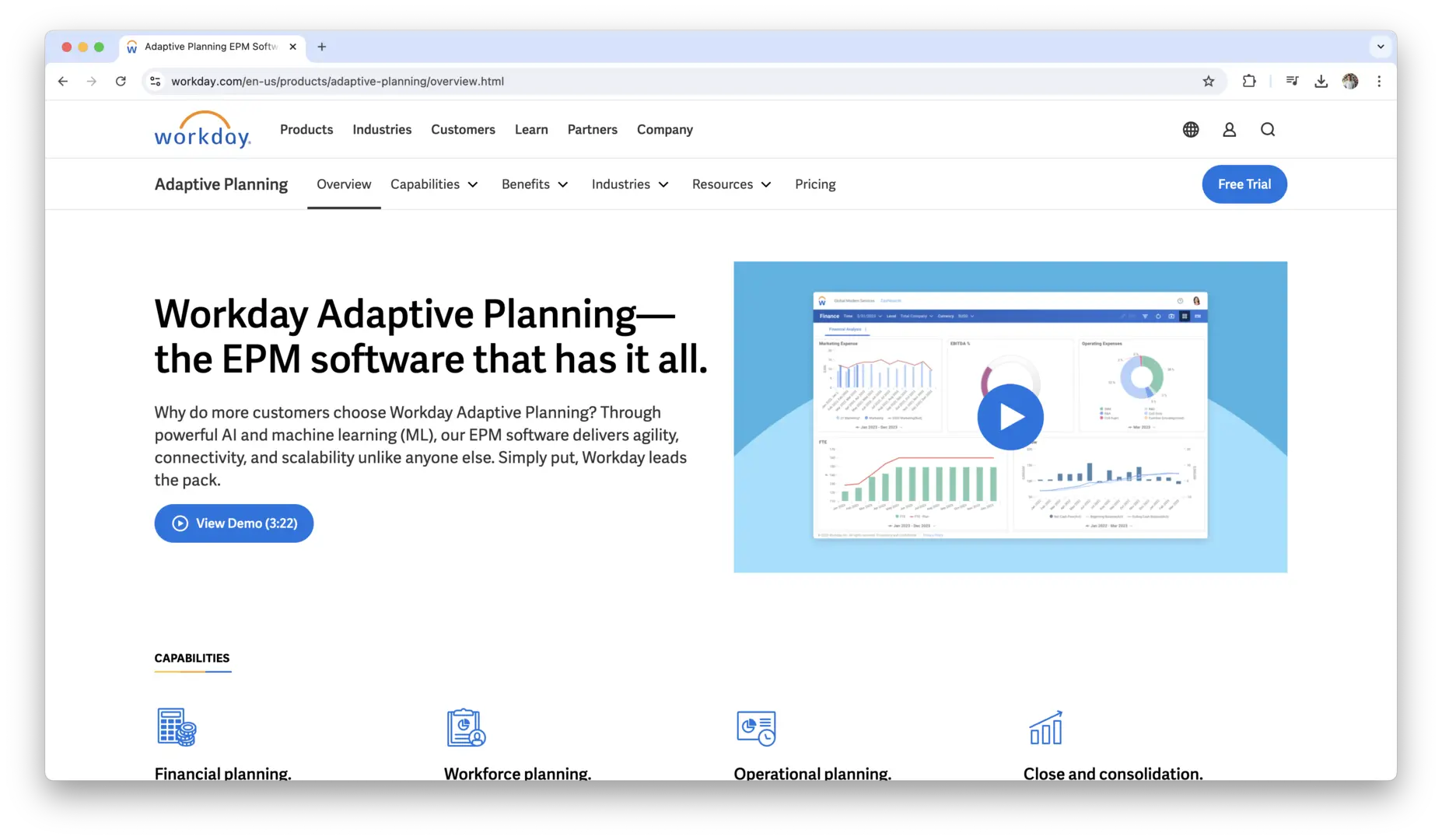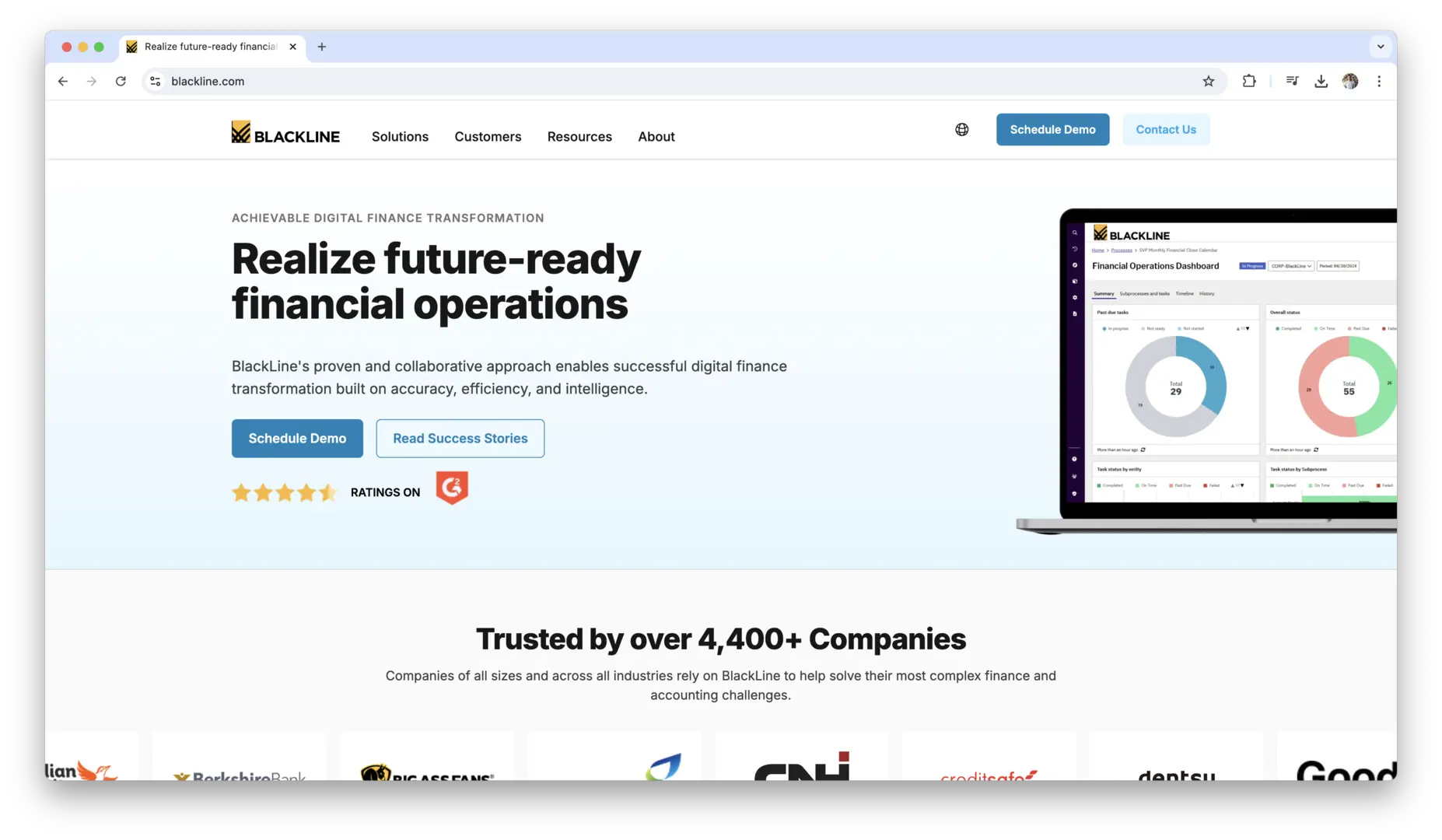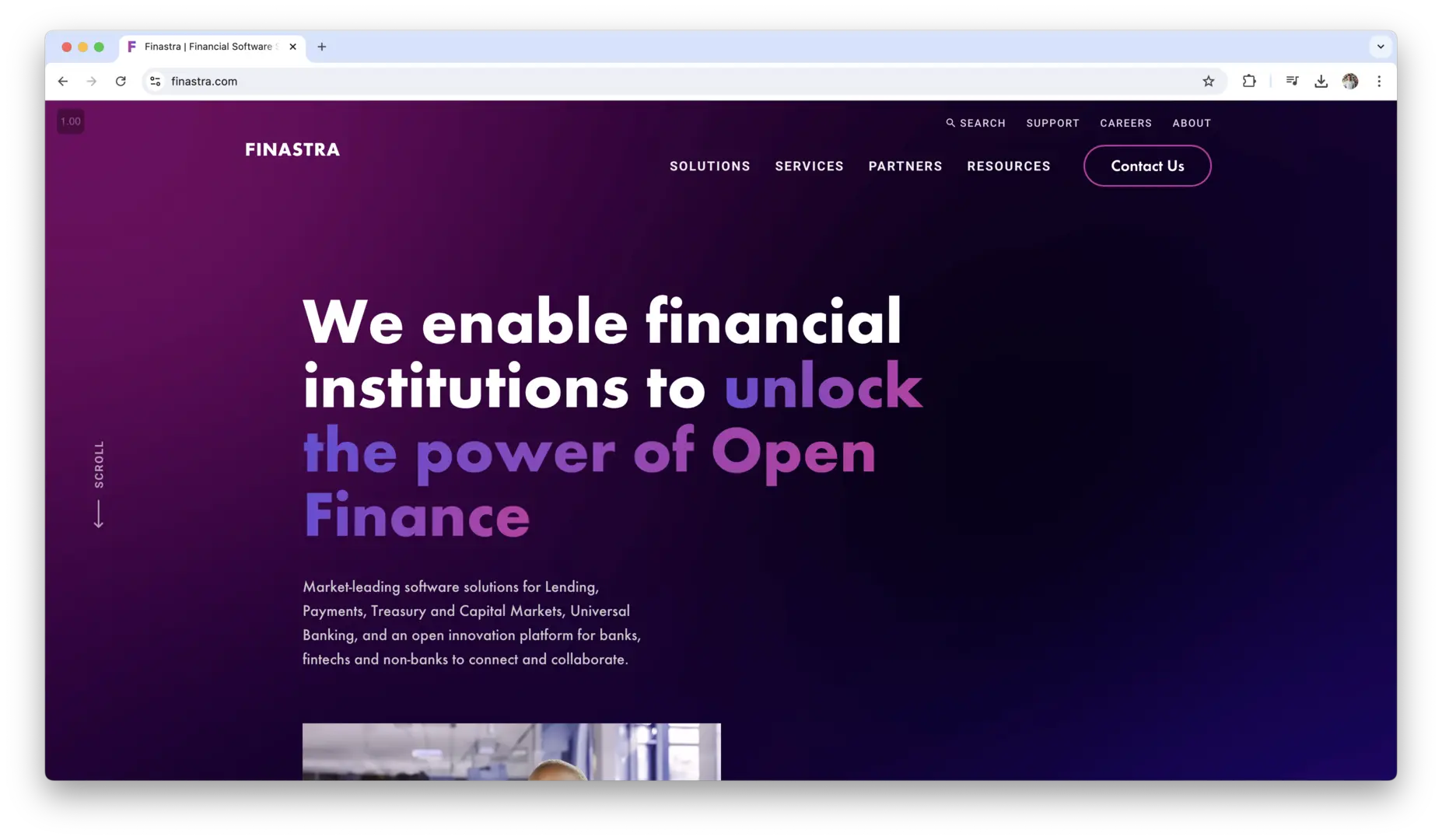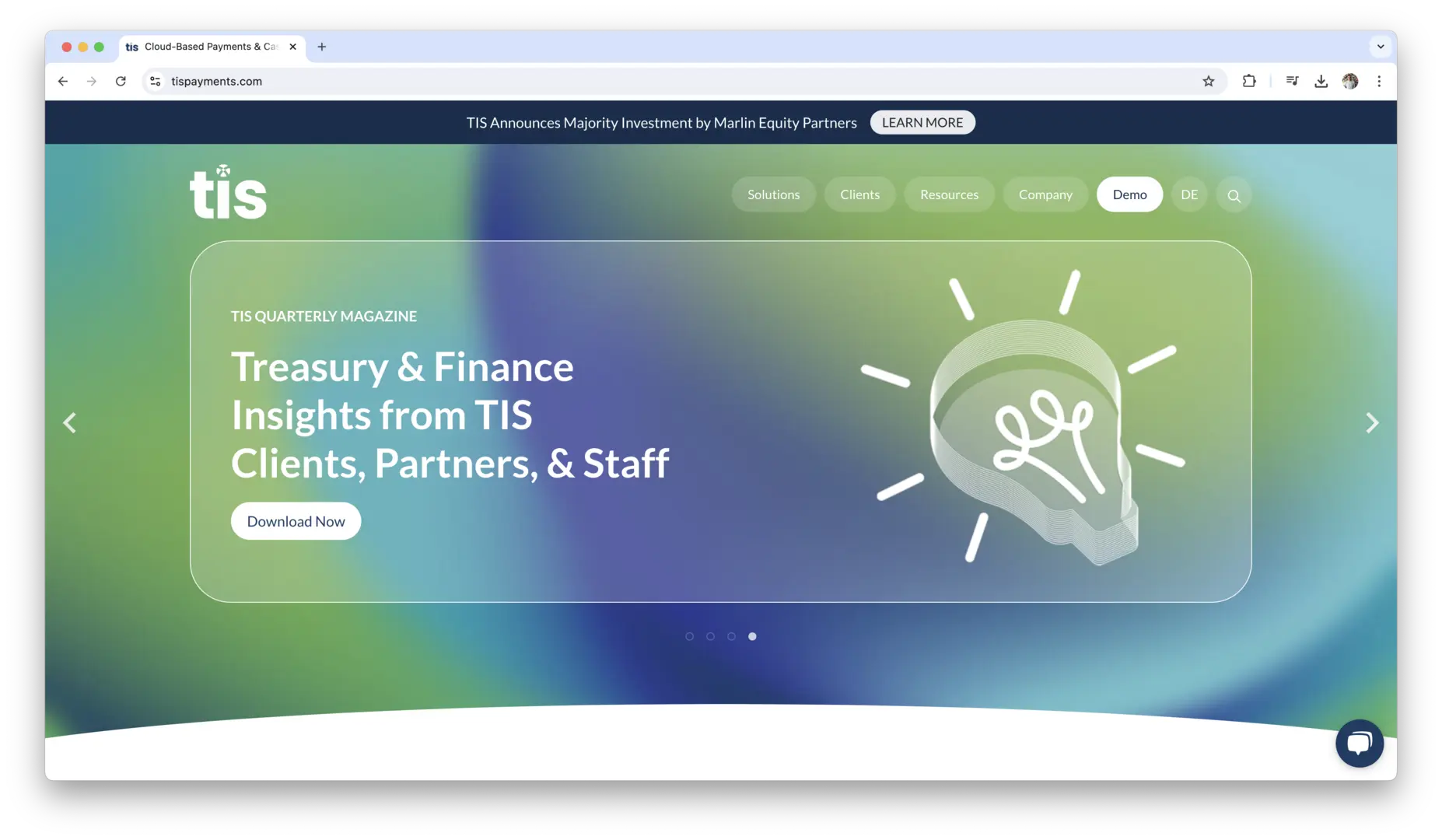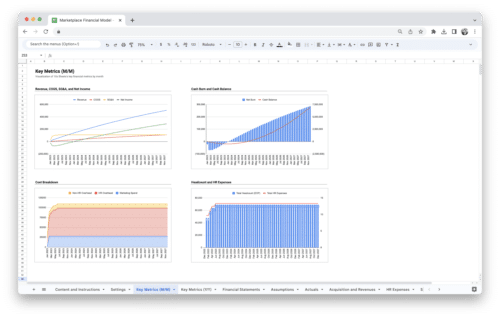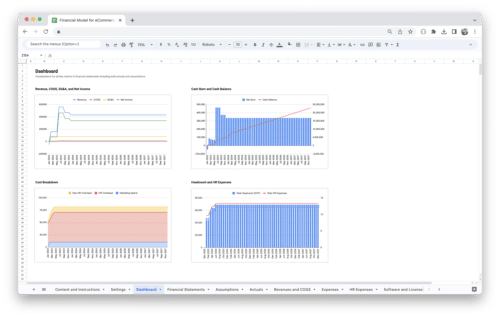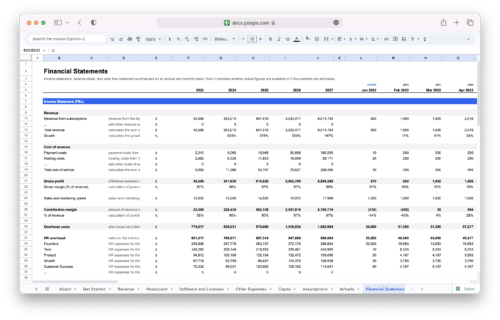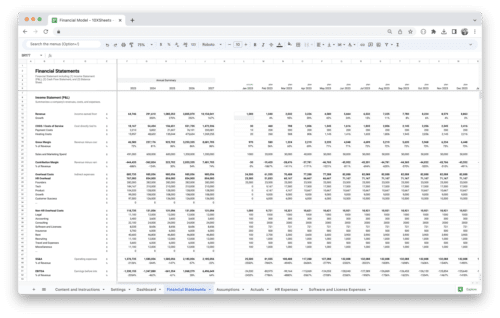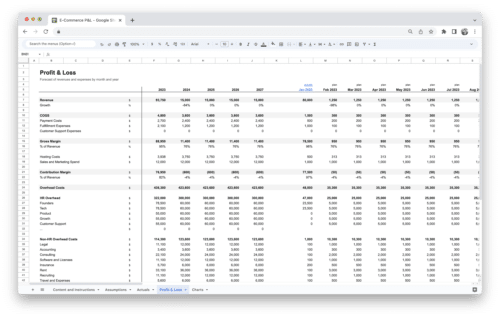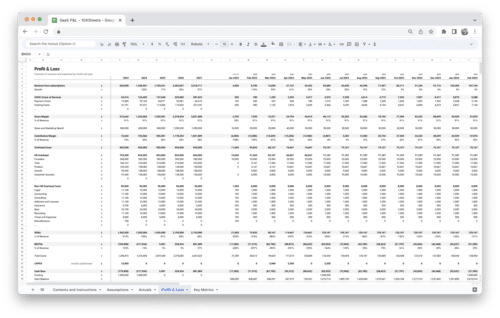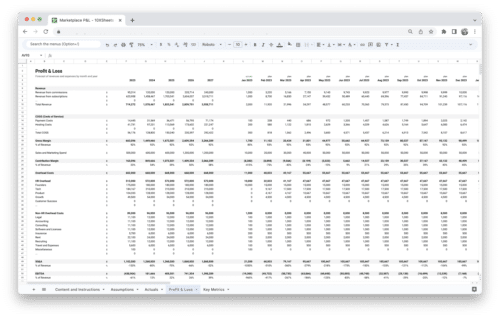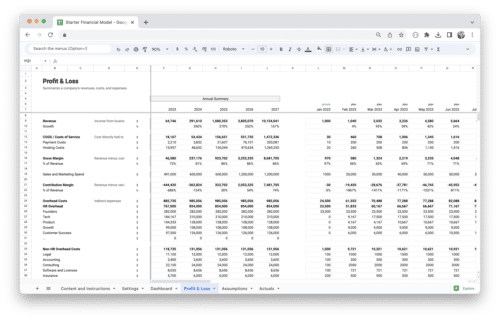Are you looking for a way to streamline your financial operations and gain better control over your company’s treasury functions? Treasury Management Systems (TMS) offer powerful tools to manage cash flow, liquidity, risk, and payments efficiently. With so many options available, it can be challenging to find the right system for your needs.
This guide provides a comprehensive overview of the top Treasury Management Systems, highlighting their key features, strengths, and benefits. Whether you’re considering an upgrade or exploring new solutions, this guide will help you understand what to look for and how each system can enhance your financial management processes. Let’s dive into the details and discover how the right TMS can transform your organization’s treasury operations.
Overview of Treasury Management Systems (TMS)
Treasury Management Systems (TMS) are advanced software solutions designed to help organizations manage their financial operations more effectively. These systems offer a suite of tools to streamline and optimize various aspects of treasury functions, which are critical for maintaining financial stability and operational efficiency.
A TMS typically includes features for cash management, liquidity planning, risk management, payment processing, and compliance. The primary goal of a TMS is to provide a unified platform that integrates with other financial systems, allowing for better visibility, control, and management of financial activities. Here’s a closer look at what a TMS encompasses:
- Cash Management: Helps in tracking and managing cash positions across multiple accounts and currencies. It includes features for cash forecasting, optimizing cash reserves, and automating cash concentration.
- Liquidity Planning: Provides tools for forecasting future cash flows, optimizing liquidity reserves, and monitoring liquidity metrics. This helps ensure that the organization has adequate funds to meet its short-term obligations and investment opportunities.
- Risk Management: Includes capabilities for identifying and assessing financial risks such as currency fluctuations, interest rate changes, and credit risks. It also offers tools for implementing hedging strategies to mitigate these risks.
- Payment Processing: Automates payment tasks, including invoice payments, payroll, and supplier transactions. This feature enhances efficiency and accuracy in managing payments.
- Compliance and Reporting: Ensures adherence to financial regulations and generates comprehensive reports for internal and external stakeholders. It includes features for maintaining audit trails and producing regulatory reports.
By centralizing these functions into a single system, a TMS enhances operational efficiency, reduces manual errors, and provides valuable insights into financial operations.
Importance of TMS in Modern Finance
A Treasury Management System (TMS) plays a crucial role in modern finance by addressing several key needs and challenges:
- Optimizes Cash Flow: Ensures that the organization has the right amount of cash available to meet its obligations and invest in opportunities, thereby improving financial stability and operational efficiency.
- Enhances Risk Management: Provides tools for identifying, assessing, and mitigating financial risks, such as currency and interest rate fluctuations, helping to protect the organization from potential losses.
- Improves Liquidity Planning: Helps in forecasting cash needs and optimizing liquidity reserves, ensuring that funds are available when needed and reducing the risk of liquidity shortfalls.
- Streamlines Payment Processing: Automates and manages payments efficiently, reducing manual effort and errors, and ensuring timely payments to suppliers and employees.
- Ensures Compliance and Accurate Reporting: Facilitates adherence to regulatory requirements and generates accurate, timely reports for internal and external stakeholders, supporting transparency and effective financial management.
- Integrates Financial Data: Centralizes data from various sources, providing a comprehensive view of financial operations and improving decision-making and strategic planning.
Key Features of Treasury Management Systems
When selecting a Treasury Management System (TMS), it’s essential to understand the core features that will benefit your financial operations. Each feature is designed to address specific needs within treasury management, enhancing overall efficiency and effectiveness.
Cash Management
Cash management is the cornerstone of any effective TMS. This feature focuses on optimizing your company’s cash flow to ensure that you have the liquidity needed to meet operational requirements and capitalize on investment opportunities. Key aspects include:
- Real-Time Cash Positioning: TMS provides a comprehensive view of your cash positions across all accounts and currencies, helping you understand exactly how much cash is available at any given moment. This real-time visibility allows for better decision-making and reduces the risk of cash shortfalls.
- Cash Forecasting: Utilize historical data and predictive analytics to forecast future cash needs. This feature helps you plan for upcoming expenditures and manage cash reserves more effectively. Accurate forecasting can prevent liquidity issues and ensure that surplus cash is invested or utilized efficiently.
- Automated Cash Concentration: This tool helps centralize cash from multiple accounts into a single account or a group of accounts. By automating this process, you can reduce the need for manual cash transfers and optimize interest income and financing costs.
Example: If your company operates multiple bank accounts across different regions, cash management features allow you to consolidate these funds, providing a clearer picture of your overall liquidity and simplifying the management of cash resources.
Liquidity Planning
Liquidity planning is crucial for maintaining financial stability and operational efficiency. A TMS with strong liquidity planning capabilities helps you:
- Develop Accurate Forecasts: Use advanced modeling techniques to project cash flows based on various scenarios. This helps in planning for both expected and unexpected changes in your cash position.
- Optimize Liquidity Reserves: Determine the optimal level of liquidity required to cover operational needs while minimizing idle cash. This balance helps you avoid tying up excess cash that could be better invested or used elsewhere.
- Monitor Liquidity Metrics: Track key liquidity ratios and metrics to ensure you are meeting your liquidity goals. This includes measures such as the current ratio and quick ratio, which indicate your company’s ability to cover short-term obligations.
Example: A TMS might offer a liquidity planning module that allows you to simulate different business scenarios—like a sudden drop in revenue or an unexpected large expense—so you can plan accordingly and ensure that you have sufficient liquidity to manage these situations.
Risk Management
Effective risk management is essential to safeguard your organization against financial uncertainties. A TMS with robust risk management features helps you:
- Identify and Assess Risks: Track and analyze various financial risks, such as currency fluctuations, interest rate changes, and credit risks. This feature helps you understand potential exposures and their impact on your financial health.
- Implement Hedging Strategies: Use financial instruments such as futures, options, and swaps to hedge against identified risks. A TMS can integrate with these instruments to manage and monitor hedging activities effectively.
- Evaluate Risk Exposure: Continuously assess your risk exposure and adjust your strategies as needed. This ongoing evaluation helps in proactively managing potential risks and minimizing their impact.
Example: For a company dealing with multiple currencies, a TMS can help you monitor exchange rate movements and implement currency hedges to mitigate the risk of adverse currency fluctuations affecting your bottom line.
Payment and Transaction Management
Streamlining payment and transaction processes is critical for maintaining operational efficiency and accuracy. Key features in this area include:
- Automated Payment Processing: Automate routine payment tasks such as invoices, payroll, and supplier payments. This reduces manual effort, minimizes errors, and speeds up transaction processing.
- Real-Time Transaction Monitoring: Track transactions as they occur to ensure timely processing and reconciliation. This feature helps you identify and address issues quickly, such as discrepancies or fraud.
- Efficient Reconciliation: Simplify the reconciliation of transactions with bank statements and other financial records. An automated reconciliation process reduces the risk of errors and ensures that your financial records are accurate and up-to-date.
Example: A TMS can automate the payment of invoices, manage approvals, and handle electronic funds transfers, making the payment process faster and more reliable while also providing a clear audit trail.
Compliance and Reporting
Maintaining compliance with regulatory requirements and generating accurate reports is vital for financial governance. A TMS helps with:
- Regulatory Compliance: Ensure adherence to financial regulations and industry standards, including anti-money laundering (AML) and Know Your Customer (KYC) requirements. A TMS can help you stay compliant by integrating regulatory checks and balances into your financial processes.
- Automated Reporting: Generate detailed financial reports for internal and external stakeholders. This includes balance sheets, income statements, and cash flow statements. Automated reporting saves time and reduces the risk of errors compared to manual report generation.
- Audit Trails: Maintain comprehensive records of all transactions and changes for audit purposes. An audit trail helps in tracking historical data, ensuring transparency, and facilitating easier audits.
Example: A TMS can automate the creation of regulatory reports and provide compliance checklists to ensure that you meet all required financial regulations, simplifying the reporting process and reducing the risk of non-compliance.
Top Treasury Management Systems
Choosing the right Treasury Management System (TMS) is crucial for optimizing your financial operations. Several top systems offer a range of features to enhance cash management, liquidity planning, risk management, and more. Here’s a closer look at some of the leading TMS options available today:
1. SAP Treasury and Risk Management
SAP S/4HANA Cloud for treasury and risk management provides a comprehensive suite of tools designed to support complex treasury operations. This system integrates seamlessly with SAP’s broader ERP platform, offering advanced capabilities in cash and liquidity management, risk management, and financial reporting.
One of its standout features is its ability to provide real-time visibility into cash positions across various accounts and currencies. This visibility is complemented by sophisticated risk management tools that help identify and mitigate financial risks related to currency fluctuations, interest rate changes, and commodity price movements.
The system also includes robust compliance and reporting functionalities, ensuring that you can meet regulatory requirements and generate detailed financial reports efficiently. With its scalability and integration capabilities, SAP Treasury and Risk Management is well-suited for large organizations with complex treasury needs.
2. Kyriba
Kyriba is a cloud-based TMS that offers a wide range of features to streamline treasury and finance operations. Its cloud-based nature provides flexibility and accessibility, making it a popular choice for organizations looking to leverage modern technology.
Kyriba’s core features include cash and liquidity management, risk management, and supply chain finance. The platform is known for its strong integration capabilities, allowing it to connect with various ERP systems, banks, and financial institutions. This integration facilitates real-time data synchronization and enhances the accuracy of financial information.
The system’s user-friendly interface and advanced analytics capabilities enable organizations to gain valuable insights into their financial operations. Kyriba also offers comprehensive compliance and reporting tools, helping organizations stay compliant with regulatory requirements and produce accurate financial reports.
3. Oracle Treasury
Oracle Banking Treasury Management provides an extensive set of tools designed to enhance treasury operations and financial management. Part of the Oracle Financial Services suite, this system offers advanced features for cash management, liquidity forecasting, risk management, and regulatory compliance.
The platform excels in its integration with other Oracle applications and third-party systems, ensuring that financial data is seamlessly synchronized and accessible across different platforms. Its advanced analytics and reporting capabilities offer deep insights into financial performance, helping organizations make informed decisions.
Oracle Treasury’s scalable architecture and robust security features make it suitable for both large enterprises and mid-sized organizations. The system’s flexibility allows it to adapt to various business needs and regulatory requirements.
4. FIS Quantum
FIS Treasury and Risk Manager – Quantum Edition is a comprehensive TMS designed for organizations with complex treasury requirements. It offers a wide range of features, including cash management, risk management, and financial transactions processing, all within a single integrated platform.
The system’s advanced risk management tools are particularly noteworthy, providing detailed analysis and management of various financial risks. Its cash management capabilities include real-time visibility into cash positions and liquidity forecasting, ensuring that organizations can effectively manage their cash resources.
FIS Quantum’s strong integration capabilities allow it to connect with various ERP systems and banks, facilitating seamless data exchange and enhancing overall efficiency. Its scalable architecture and extensive functionality make it suitable for large enterprises and organizations with complex treasury operations.
5. ION Treasury
ION Treasury offers a comprehensive suite of treasury management tools designed for large organizations with complex needs. Its platform includes capabilities for cash management, risk management, and trading, all integrated within a single solution. ION Treasury is known for its robust analytics and reporting features, which provide deep insights into financial data and support strategic decision-making.
The system’s integration capabilities allow it to connect with various ERP systems, banks, and financial institutions, ensuring seamless data flow and accurate information. Its scalability and flexibility make it suitable for global enterprises managing diverse financial operations.
6. GTreasury
GTreasury provides a cloud-based TMS with a focus on cash management, liquidity forecasting, and payment processing. Its platform is designed to offer real-time visibility into cash positions and streamline treasury operations. GTreasury is recognized for its user-friendly interface and strong integration capabilities, allowing it to connect with ERP systems and banks for efficient data management.
The system also includes features for risk management and compliance, helping organizations manage financial risks and adhere to regulatory requirements. GTreasury’s scalable design makes it suitable for both mid-sized and large enterprises.
7. Reval (now part of ION)
Reval, now integrated into the ION Treasury suite, is known for its robust risk management and hedging capabilities. The platform offers comprehensive tools for cash management, liquidity forecasting, and financial risk management. Reval’s strength lies in its ability to provide detailed analytics and reporting, supporting informed decision-making and strategic planning.
The system’s integration with other financial and ERP systems ensures seamless data flow and accurate financial information. Its advanced risk management features make it a strong choice for organizations with complex financial risk profiles.
8. Workday Adaptive Insights
Adaptive Planning EPM Software, now a part of Workday, offers a cloud-based financial planning and analysis solution with strong treasury management capabilities. The platform includes features for cash flow forecasting, liquidity management, and financial reporting. Its advanced analytics and reporting tools provide valuable insights into financial performance and support strategic decision-making.
The system’s integration with Workday’s broader suite of financial and HR solutions enhances its functionality and provides a comprehensive view of organizational performance. Adaptive Insights is well-suited for organizations seeking advanced financial planning and analysis tools.
9. Treasury Management by BlackLine
BlackLine’s Treasury Management solution focuses on automating and streamlining treasury operations. The platform provides features for cash management, liquidity forecasting, and payment processing, with a strong emphasis on automation and efficiency. BlackLine is recognized for its comprehensive financial close and reconciliation tools, which enhance overall financial management.
The system’s integration with other BlackLine products and third-party applications ensures seamless data flow and accurate financial information. BlackLine’s focus on automation and efficiency makes it a strong choice for organizations seeking to improve their treasury operations.
10. Finastra
Finastra offers a range of financial software solutions, including a robust TMS for cash management, liquidity planning, and risk management. The platform is known for its comprehensive functionality and strong integration capabilities, connecting with various ERP systems, banks, and financial institutions.
Finastra’s TMS provides advanced analytics and reporting tools, supporting informed decision-making and strategic planning. Its scalable design and extensive functionality make it suitable for large enterprises and financial institutions.
11. TIS (Treasury Intelligence Solutions)
TIS offers a cloud-based TMS with a focus on cash management, liquidity planning, and payment processing. The platform provides real-time visibility into cash positions and advanced forecasting tools to optimize liquidity management. TIS is known for its user-friendly interface and strong integration capabilities, connecting with various ERP systems and financial institutions.
The system’s emphasis on cash management and liquidity planning helps organizations improve financial stability and operational efficiency. TIS’s scalability and flexibility make it a solid choice for organizations seeking to enhance their treasury operations.
These leading TMS options each offer unique features and capabilities designed to meet different organizational needs. By evaluating these systems based on your specific requirements and objectives, you can choose the TMS that best aligns with your financial management goals.
How to Evaluate Treasury Management Systems?
When evaluating Treasury Management Systems (TMS), it’s crucial to consider several key criteria to ensure that the system you choose aligns with your organization’s needs and objectives. Here’s a deeper look into each of these criteria:
Scalability and Flexibility
Scalability and flexibility are fundamental attributes of an effective TMS. As your business grows or evolves, your TMS should be able to adapt accordingly.
- Scalability refers to the system’s ability to handle increasing volumes of transactions and data without compromising performance. A scalable TMS can grow with your business, accommodating more users, additional transactions, and expanded functionality as needed.
- Flexibility ensures that the TMS can adjust to changes in your business environment, such as new financial regulations, changes in operational processes, or shifts in market conditions. A flexible system allows for customization and configuration to meet unique business requirements.
Assess how well the TMS can scale with your business and adapt to future needs. Look for systems that offer modular features or can integrate with additional tools as your requirements expand.
Integration Capabilities
Integration capabilities are crucial for ensuring that your TMS works seamlessly with other financial systems and tools within your organization.
- ERP Integration: Your TMS should integrate smoothly with your Enterprise Resource Planning (ERP) system. This connection ensures that financial data flows efficiently between your TMS and ERP, reducing the need for manual data entry and improving accuracy.
- Third-Party Applications: Evaluate the system’s ability to connect with other third-party applications you use, such as banking platforms, investment management tools, or reporting systems. Seamless integration with these applications streamlines workflows and enhances overall efficiency.
- Data Synchronization: Effective integration also means that data is synchronized across systems, ensuring that you have a single, accurate source of financial information. This reduces discrepancies and ensures consistency in reporting and analysis.
User Experience and Interface
The user experience and interface of a TMS play a significant role in its effectiveness and adoption within your organization.
- Ease of Use: A user-friendly interface simplifies complex tasks and reduces the learning curve for new users. Look for systems with intuitive navigation and accessible features that make daily operations straightforward.
- Customization: Consider whether the TMS allows for customization of dashboards and reports. Tailoring the interface to fit your specific needs can enhance usability and ensure that the system aligns with your business processes.
- Support and Training: Evaluate the quality of support and training resources provided. Comprehensive training materials and responsive support teams can help users become proficient with the system and address any issues that arise.
Security and Compliance Standards
Security and compliance are critical when selecting a TMS, given the sensitive nature of financial data.
- Data Security: Ensure that the TMS implements robust security measures, such as encryption, secure access controls, and regular security updates. Protecting your financial data from unauthorized access and breaches is essential.
- Compliance: The system should comply with relevant financial regulations and industry standards, such as anti-money laundering (AML) requirements, data protection laws, and industry-specific guidelines. This helps ensure that your operations meet legal and regulatory requirements.
- Audit Trails: A TMS should maintain detailed audit trails of all transactions and changes. This feature supports transparency, facilitates audits, and helps in tracking and resolving discrepancies.
Cost and Return on Investment
Understanding the cost and potential return on investment (ROI) is vital for making an informed decision about a TMS.
- Initial and Ongoing Costs: Evaluate both the upfront costs of purchasing and implementing the system and the ongoing costs, including maintenance, support, and subscription fees. Ensure that the total cost of ownership aligns with your budget.
- ROI: Assess the potential benefits and improvements the TMS can bring to your financial operations. Consider factors such as increased efficiency, reduced errors, enhanced cash management, and better compliance. Calculate how these benefits translate into tangible financial gains or cost savings.
- Cost-Benefit Analysis: Conduct a cost-benefit analysis to compare the total costs of the TMS with the expected improvements in financial management and operational efficiency. This analysis helps you determine whether the investment in the TMS will deliver a satisfactory return.
How to Implement a Treasury Management System (TMS)?
Implementing and integrating a Treasury Management System (TMS) effectively is crucial to maximize its benefits and ensure a smooth transition. Here’s a detailed look at the essential steps and considerations involved in this process.
Planning for Implementation
Effective planning is the foundation of a successful TMS implementation. Begin by setting clear objectives and defining what you aim to achieve with the new system. This includes:
- Assessing Requirements: Identify the specific needs of your organization, such as cash management, risk management, or compliance. Understanding these needs helps in selecting a TMS that aligns with your goals.
- Creating a Project Plan: Develop a detailed project plan that outlines the implementation timeline, key milestones, and responsible team members. This plan should include stages such as system configuration, data migration, and testing.
- Allocating Resources: Ensure that adequate resources—both financial and human—are allocated for the implementation. This includes budgeting for the system itself, as well as any additional costs for training and support.
- Establishing Communication Channels: Set up clear communication channels among all stakeholders, including internal teams and the TMS vendor. Regular updates and feedback loops help in addressing issues promptly and keeping the project on track.
Integration with Existing Financial Systems
Integrating your TMS with existing financial systems is crucial for ensuring seamless operations and data consistency. Here’s how to approach integration:
- Mapping Data Flows: Identify how data will flow between the TMS and other systems, such as ERP, banking platforms, and accounting software. Understanding these data flows helps in designing integration points and ensuring that information is accurately exchanged.
- Choosing Integration Methods: Determine the best methods for integration, such as APIs, middleware, or direct connections. The choice depends on the capabilities of your TMS and existing systems, as well as your integration requirements.
- Testing Integrations: Before going live, thoroughly test all integrations to ensure they work as expected. This includes verifying data accuracy, checking system performance, and addressing any issues that arise during testing.
- Ongoing Integration Management: After implementation, continuously monitor and manage integrations to address any changes in business processes or system updates. Regular reviews ensure that integrations remain effective and efficient.
Training and Support for Users
Training and support are critical for ensuring that users can effectively utilize the TMS and leverage its full capabilities. Consider the following:
- Developing a Training Plan: Create a comprehensive training plan that covers all aspects of the TMS, including system features, processes, and best practices. Tailor the training to different user roles to ensure relevance and effectiveness.
- Providing Training Resources: Offer various training resources such as manuals, online tutorials, and hands-on workshops. Providing multiple learning options caters to different learning styles and helps users become proficient with the system.
- Offering Ongoing Support: Ensure that users have access to ongoing support, including help desks, user forums, and troubleshooting resources. Responsive support is essential for resolving issues quickly and maintaining user satisfaction.
- Monitoring User Feedback: Regularly collect and review feedback from users to identify any areas where additional training or support may be needed. This helps in continuously improving the user experience and addressing any challenges that arise.
Common Challenges and Solutions
Implementing and integrating a TMS can come with its share of challenges. Being aware of these potential issues and having solutions in place can help you navigate them effectively:
- Resistance to Change: Users may resist adopting the new system due to comfort with existing processes or fear of the unknown. Mitigate this by involving users early in the process, communicating the benefits of the TMS, and providing thorough training.
- Data Migration Issues: Migrating data from legacy systems to the new TMS can be complex and prone to errors. Ensure that you have a well-defined data migration plan, including data mapping, cleansing, and validation, to minimize issues.
- Integration Difficulties: Integrating the TMS with other systems can present technical challenges. Work closely with your TMS vendor and IT team to address any integration issues, and thoroughly test all connections before going live.
- Budget Overruns: Implementation costs may exceed initial estimates due to unforeseen issues or additional requirements. Keep a close eye on the budget, and allocate a contingency fund to address any unexpected expenses.
- Technical Issues: Technical problems can arise during or after implementation. Establish a robust support system with your TMS vendor and ensure that you have access to timely assistance for resolving any technical issues that occur.
By addressing these challenges proactively and developing effective solutions, you can ensure a smoother implementation and integration process, ultimately leading to a successful deployment of your TMS.
Conclusion
Choosing the right Treasury Management System (TMS) can significantly impact your organization’s financial efficiency and effectiveness. With so many advanced systems available, each offering unique features and capabilities, it’s crucial to assess your specific needs and goals. From cash management and liquidity forecasting to risk management and compliance, a well-suited TMS can streamline your operations, enhance visibility, and improve decision-making. By carefully considering the strengths of each system and how they align with your requirements, you can find a solution that not only meets your current needs but also supports future growth.
As you explore the various TMS options, keep in mind that the best system for you will be one that integrates smoothly with your existing tools, offers strong support and training, and provides valuable insights into your financial operations. Investing time in understanding these systems and their functionalities will pay off in more efficient treasury management, reduced risks, and improved financial stability. Take the time to evaluate each option thoroughly, and you’ll be well on your way to enhancing your organization’s financial operations and achieving your strategic objectives.
Get Started With a Prebuilt Template!
Looking to streamline your business financial modeling process with a prebuilt customizable template? Say goodbye to the hassle of building a financial model from scratch and get started right away with one of our premium templates.
- Save time with no need to create a financial model from scratch.
- Reduce errors with prebuilt formulas and calculations.
- Customize to your needs by adding/deleting sections and adjusting formulas.
- Automatically calculate key metrics for valuable insights.
- Make informed decisions about your strategy and goals with a clear picture of your business performance and financial health.
-
Sale!
Marketplace Financial Model Template
Original price was: $219.00.$149.00Current price is: $149.00. Add to Cart -
Sale!
E-Commerce Financial Model Template
Original price was: $219.00.$149.00Current price is: $149.00. Add to Cart -
Sale!
SaaS Financial Model Template
Original price was: $219.00.$149.00Current price is: $149.00. Add to Cart -
Sale!
Standard Financial Model Template
Original price was: $219.00.$149.00Current price is: $149.00. Add to Cart -
Sale!
E-Commerce Profit and Loss Statement
Original price was: $119.00.$79.00Current price is: $79.00. Add to Cart -
Sale!
SaaS Profit and Loss Statement
Original price was: $119.00.$79.00Current price is: $79.00. Add to Cart -
Sale!
Marketplace Profit and Loss Statement
Original price was: $119.00.$79.00Current price is: $79.00. Add to Cart -
Sale!
Startup Profit and Loss Statement
Original price was: $119.00.$79.00Current price is: $79.00. Add to Cart -
Sale!
Startup Financial Model Template
Original price was: $119.00.$79.00Current price is: $79.00. Add to Cart
